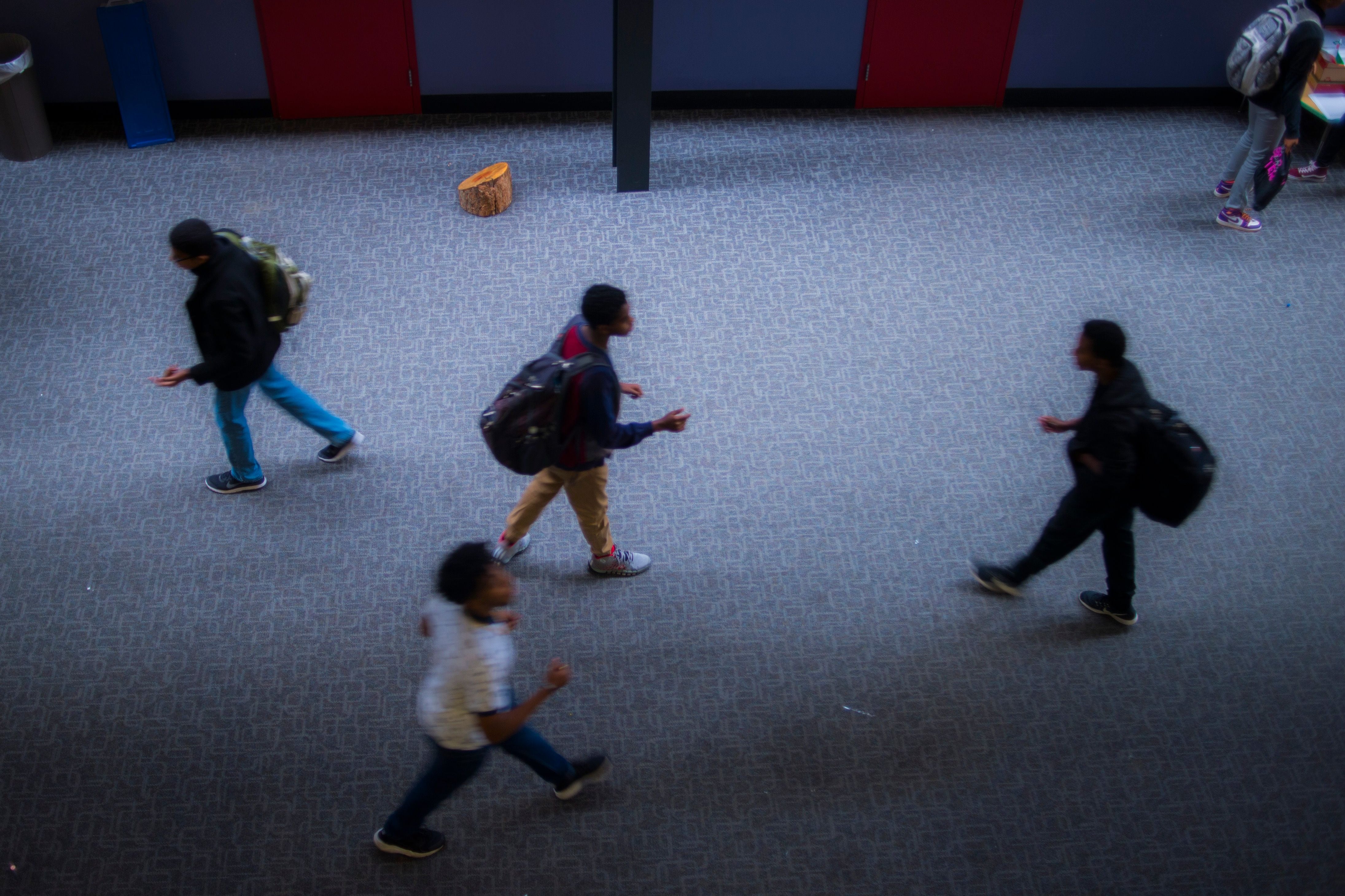In Aurora, principals and assistant principals knocking on doors looking for students are asked to wear school gear, along with their school identification, and, of course, masks.
And because many times people may not answer the door, the district also recommends that those school leaders leave door hangers that clearly explain how to contact the school.
Across the state, teachers, counselors, and other school staff are making phone calls, similar home visits, and sending certified mail. Some school districts are warning families they may face truancy charges.
It’s all part of the time-consuming labor to find missing students. Officials worry about learning losses and student safety. The work is also urgent because school districts are funded by the number of students they serve. Colorado’s official count day was last week, but districts still have a window of time to be able to count additional students who show up, under some circumstances.
That sense of urgency has some school districts, like Greeley, threatening to take families to truancy court. Parents and advocates say they’re also worried about the welfare of children, but using the courts will have a negative impact on families of color and those with fewer resources.
“These families, or the students of these families who are unengaged or not enrolled, are not doing so because they don’t find education to be worth their time, but rather there’s some problems,” said Nicholas Martinez, co-founder of the parent advocacy group Transform Education Now. “Families have done their best to adjust to the reality in front of us. For a lot of folks it’s just not working.”
This year’s drops in enrollment are happening both in districts that have started the school year fully online and in those that have offered in-person classes.
The number of missing students is high, and the number of students districts have been able to track down is low.
Enrollment lower than projected
Districts approved their current school year budgets based on their best estimates of how many students they would have this year. Many districts already guessed they would have a drop in enrollment, but even compared with their projections, student count is low — which means districts could face million-dollar shortfalls midyear.
“I never want to look at the student as a number; however, it is directly tied to our funding,” said Alan Kaylor, superintendent of the Weld Re-8 School District in Fort Lupton. His district, in a heavily Hispanic area of northern Colorado, is missing from 150 to 200 students beyond projections, and his staff are having trouble reaching about 130 students in particular. That’s a little more than 5% of last year’s 2,452 student population.
“I am concerned,” Kaylor said.
District officials are also concerned about student learning and student well-being. If students are not engaged in some kind of learning, they may be further behind when they do return to schools. And if they aren’t in schools, officials wonder if children are sitting home alone while parents are out of the home working.
Kaylor said his early assessments show that somewhere around 40% to 65% of students in kindergarten through eighth grade are a year or more behind. But students are already making some growth in the first couple of months of school.
Teachers have to be able to reach students to help them make up those losses. Kaylor said he knows that some of the families his staff have not been able to reach live in an area without broadband internet access. Even so, families without internet access have opted to stay in online learning, sometimes out of fear of in-person classes. Teachers make efforts to deliver paper packets, but schools have lost track of some of those families.
“I think the unintended consequences of COVID are monumental,” Kaylor said.
AmeriCorps to help districts
Recently the state invested in expanding AmeriCorps programs to help school districts find and engage students who aren’t in school.
Colorado Youth for a Change will place up to 30 new AmeriCorps members in Front Range school districts this school year to help them engage with students, said CEO Mary Zanotti. So far, 13 have been hired and placed.
Some of those corps members are making phone calls and home visits to track down students. But districts can also use the members for other related needs, like to sit with students in a classroom or to help students working online.
Next month, the organization will also hire 14 other AmeriCorps members to expand an existing program working with high-risk high school students.
“We know the needs are there,” Zanotti said. From the members who are already placed, she hears that when families are contacted, the experiences vary. Some families just needed help knowing how to engage with their school.
The state is also expanding AmeriCorps members through another program in the San Luis Valley.
District officials also are seeing varying causes for why students aren’t engaged or enrolled.
In Greeley, officials say they’ve heard some immigrants have sent students back to home countries. Some parents are choosing to home-school this year and may not have let their districts know yet.
Many districts report that going door to door has not proven successful. Advocates say those visits could be intimidating to some families if they are undocumented, don’t know who’s at their door, or have been threatened with truancy. Some officials wonder if in some cases children may be inside, home alone, and told not to answer the door.
“It’s a little scary for us when we can’t find those kids,” said Theresa Myers, spokeswoman for the Greeley school district. “We want to make sure they’re in a safe home, make sure they’re not alone in their home. There’s a lot of different circumstances.”
A message the Greeley district posted to parents last week asked them to make sure their children log on to their online classes, or show up to their classes in person, or else face the threat of truancy. The message raised some alarms among Greeley parents and advocates last week and was removed days later.
Concern about ‘criminalizing people’
Joe Molina, president of the Northern Colorado Latino Foundation, said he is concerned anytime messages go out that may threaten “criminalizing people.”
“And for what? Because your family is in fear of catching COVID?” Molina said. “There’s a lot of different ways to approach it.”
Myers said the district has already tried all other efforts to reach families and does not want to penalize students who aren’t online.
“It’s an absolute 100% last resort,” she said. “But we’re hoping that families take that seriously.”
Myers said that after the post, the families that were reaching out let the district know that many are still having internet connection problems. Students who are in that situation won’t get reported as truant, she said.
“Really it’s just to open the lines of communication,” Myers said.
Still, some worry it was not the right step.
“Greeley can say it’s just a tactic, but it erodes trust,” said Martinez of Transform Education Now. “Truancy is not a game to families. It is something that’s very scary. It’s intimidating.”
Kaylor of RE-8 said he has not focused on reporting students as truant because he doesn’t want to penalize students “due to a situation they don’t control.”
But he is concerned with high school students, who have more to lose if they get behind on credits toward graduation.
Family connections help
Aurora officials said they have not referred any students to truancy courts this year. The district is focusing on continuing home visits, which it has done for many years.
At South Middle School in Aurora, where 92% of all students qualify for subsidized lunches and the majority of students are students of color, long-established family connections created through regular home visits may have helped the school to buck the enrollment trend. South has more students enrolled than projected.
“It’s a positive impact,” said Mehran Ahmed, principal of South. “Connecting with our families is one of the big things we focus on. Our teachers do a great job.”
Family advocates believe school districts should be partnering with community organizations in the work to find families and students.
“Maybe we have a better chance of getting in touch with folks,” said Martinez of Transform Education Now. “Now more than ever we need a community response.”
Truancy should not be part of the answer, he said.
“I feel like we can come up with something better.”








